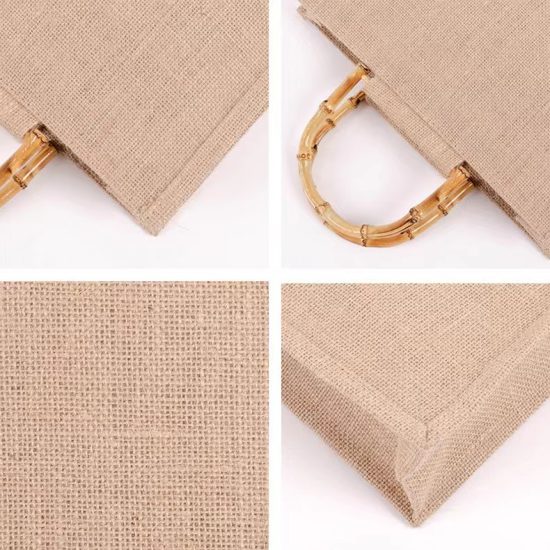The production process of jute bags, also known as “yellow hemp bags,” typically involves the following steps:
- Harvesting and retting: The first step is to harvest the hemp plant and then ret it, which involves soaking the plant in water to loosen the fibers from the stem.
- Breaking and scutching: The next step is to break the stems and separate the fibers from the woody core. This is typically done using a breaking machine and a scutching machine.
- Spinning: Once the fibers have been separated, they are spun into yarn using a spinning wheel or other spinning equipment.
- Weaving: The yarn is then woven into a fabric, typically using a handloom or a foot-powered loom.
- Cutting and sewing: Once the fabric has been woven, it is cut into the desired shape and size for the bag. The pieces are then sewn together using a needle and thread.
- Finishing: Finally, the bag is finished with any necessary embellishments or decorations, such as embroidery or printed patterns.
Overall, the production of jute bags involves a combination of traditional techniques and modern machinery, resulting in a durable and practical bag that is also a testament to China’s rich cultural heritage.



